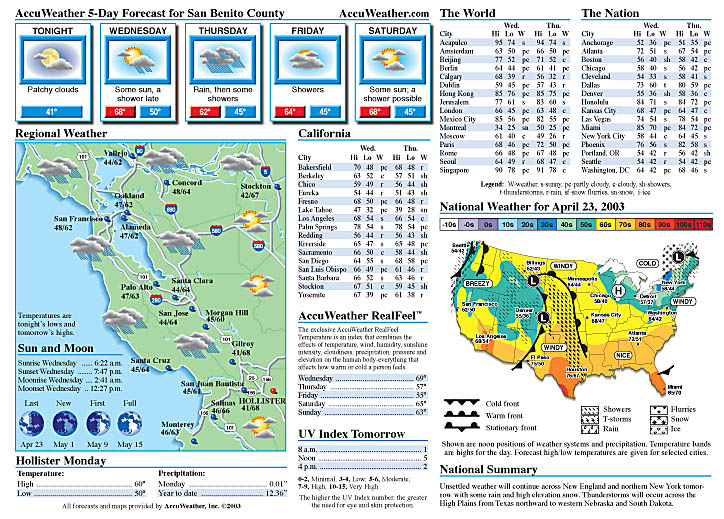A sea of trash
Lately we’ve been harvesting a bumper crop of litter
– much of it plastic – from our front yard and the street around
us. We took the dog down for a romp at the local park, but that
required policing as well.
A sea of trash
Lately we’ve been harvesting a bumper crop of litter – much of it plastic – from our front yard and the street around us. We took the dog down for a romp at the local park, but that required policing as well.
Then true to the bumper sticker admonition to “act local, think global,” the San Francisco Chronicle this week published a story about a much larger litter problem. But this one will not be fixed with a few minutes spent stooped over cleaning up after a stranger.
The Great Pacific Garbage Patch slowly swirls around the ocean about 1,000 miles off San Francisco. It cannot be cleaned up. It is too large, too amorphous and too hard to collect to consider such an effort. But a graphic illustration in the Chronicle paints such a vivid picture that it begs action.
The picture represented the Golden Gate Bridge next to a floating mass of trash that, at its deepest, would stretch from the bridge’s footings high enough to bury its roadway.
How did a mass of crap twice the size of Texas come to be located in the middle of the world’s largest ocean?
The scientific explanation is that the trash collects at the mouth of a sort of vast whirlpool formed by a clockwise trade wind that courses around the Pacific Rim. Debris dumped or washed into the ocean often ends up in this growing collection of junk.
The real answer begins in our mirrors.
The debris belongs to us. Some 80 percent of it is plastic that will be with us for a very long time. And humankind’s appetite for plastics seems insatiable, with use of the stuff growing each year. In the past 20 years, plastic production in the United States has doubled. Ultimately, people studying the Garbage Patch agree that the only solution is going to be reducing the source of marine debris on land.
The Garbage Patch is a soupy collection of plastic bits, lost fishing nets and other stuff floating just below the surface. As a plastic bottle floats along, UV radiation from sunlight begins to degrade the plastic in the bottle until it becomes so brittle it breaks down into small bits, some as fine as dust.
The collision of our own litter-strewn streets and parks, the news reported in the Chronicle and a book I’m reading combine to tell me something. The book,
“Cod” by Mark Kurlansky artfully tells the story of how a fish spawned wars, fed nations, changed history and then almost disappeared. If the text gets a little heavy, Kurlansky punctuates it with a string of historic recipes for the fish from which the book borrows its title.
It may be hard to get worked up about a trash collection 1,000 miles north of Hawaii and 1,000 miles away from us, but that’s taking an ostrich’s approach to “out of sight, out of mind.”
It’s a closed system, like a giant fish aquarium.
Anyone fortunate enough to have gone offshore, well out of sight of land, knows the seas are anything but deserts.
They teem with life, above and below the ocean’s surface. Seabirds soar thousands of miles from land.
Much of the world still derives most of its protein from the sea. Phytoplankton contributes oxygen and helps fight global warming. If, as it’s been said, our planet breathes through the rain forests, then it might also be said that its pulse can be found in our seas.
Which takes me back to the litter we found in our community. Our storm drains are the headwaters of a circuitous course that leads to the Pacific. Even a pig will not foul its bedding or the area where it eats. Aren’t we at least capable of that?
Researcher Charles Moore, who has been studying the Garbage Patch for the last decade, best summed up the problem and the solution.
“It’s like a toilet that never flushes,” he said. “You can’t take these particles out of the ocean. You can just stop putting them in.”







